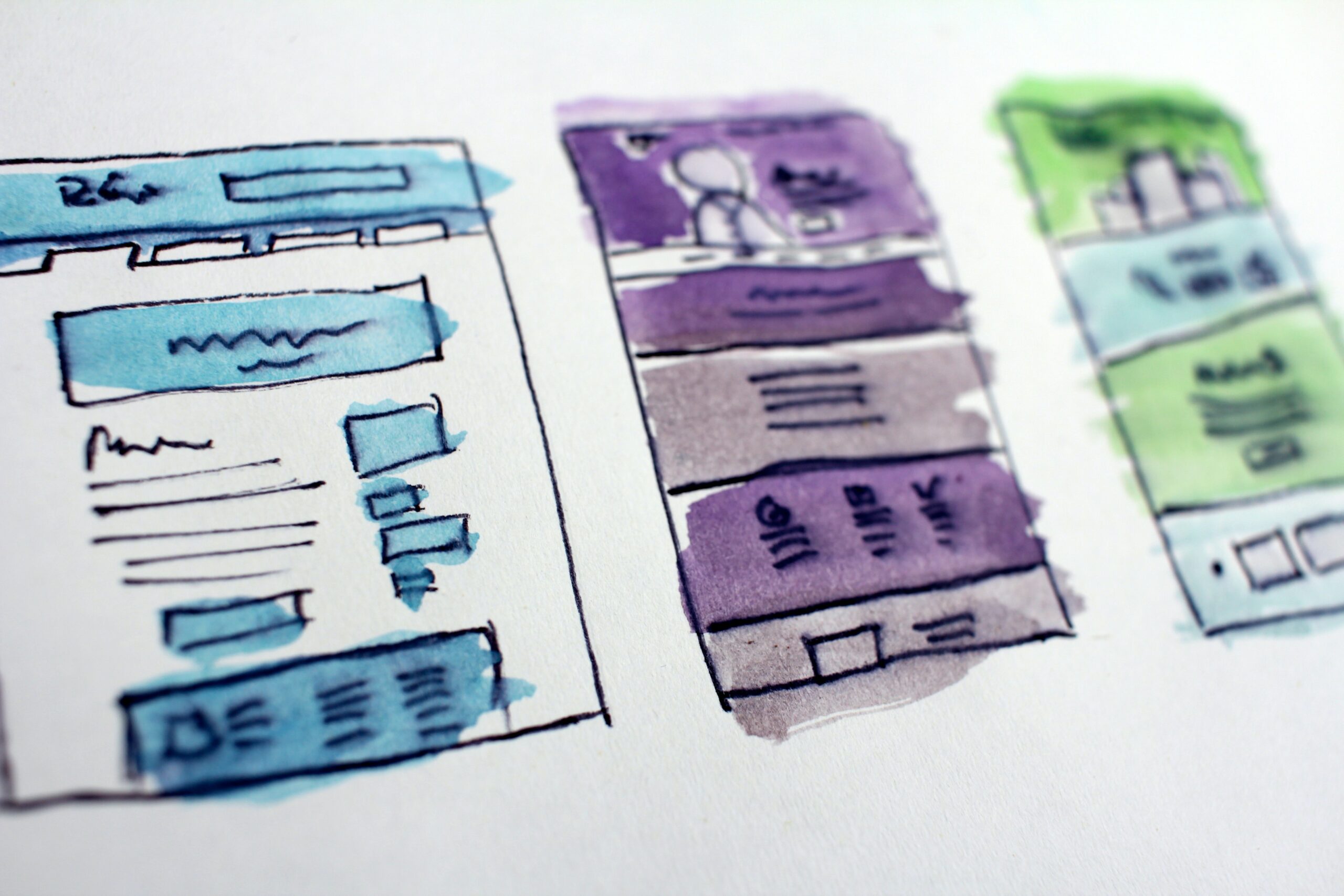Table of Contents
Introduction
In user experience (UX) design, understanding the needs, behaviours, and motivations of users is crucial for creating effective and engaging products or services. One of the most effective tools for achieving this understanding is the user persona. A user persona is a fictional representation of a specific user group, based on research and data analysis. Personas help designers and developers empathize with users, identify their goals and pain points, and make informed design decisions. In this article, we’ll discuss what makes a good persona, the components of a persona, and how to create and use personas effectively, with a focus on practical tips for uni students. Whether you’re new to UX design or an experienced professional, this guide will help you to create user personas that accurately reflect your target audience and improve the overall user experience.

What Makes a Good Persona?
User personas are fictional representations of your ideal customers, based on research and data about your target audience. They help you understand your users’ needs, motivations, and behaviours, which in turn helps you design products that meet their specific needs and preferences.
An example
There are many ways to create user personas, but they typically consist of a few key components, such as demographic information, goals, pain points, and behaviours. Here’s an example of a simple persona for a fitness app:
Name: Jane Age: 35
Occupation: Marketing Manager
Goals: Lose 10 pounds, improve energy levels
Pain points: Busy work schedule, dislike of traditional gym settings
Behaviours: Prefers outdoor exercise, uses fitness tracking apps
Characteristics of Good Personas
To create effective personas, it’s important to keep the following characteristics in mind:
- Based on research and data – Personas should be based on real data about your target audience, such as user surveys, interviews, or analytics.
- Focused on goals and behaviours – Personas should be focused on your users’ goals, needs, and behaviours, rather than their demographic information alone.
- Concise and memorable – Personas should be easy to understand and remember so that they can be easily shared and used by your team.
- Representative of your target audience – Personas should be representative of your target audience as a whole, rather than outliers or extremes.
Common Mistakes to Avoid
There are a few common mistakes that people make when creating personas, such as:
- Creating personas based on assumptions or stereotypes – Personas should be based on real data, rather than assumptions or stereotypes about your users.
- Creating personas without proper research – Personas should be based on real research and data about your users, rather than guesswork or assumptions.
- Making personas too general or unrealistic – Personas should be specific and realistic so that they can be used effectively to guide product development.
- Neglecting to update or refine personas over time – Personas should be updated and refined over time, based on new data and feedback from your users.
Importance of Accurate and Realistic Personas
Creating accurate and realistic personas is essential for product development, as it helps you understand your users’ needs, behaviours, and preferences. This, in turn, helps you design products that meet their specific needs, which can lead to improved user experience, increased efficiency, and reduced costs.
Components of a Persona
To create a successful persona, it’s important to understand the key components that make up a persona. These components include who the user is, their goals and objectives, the barriers preventing them from achieving those goals, and their pain points and needs.
Who They Are
The first component of a persona is identifying who the user is. This includes basic demographic information such as age, gender, education level, and job title. It’s also important to consider their interests, hobbies, and values. This information will help developers understand the user’s mindset and what is important to them.
Their Goals and Objectives
The next component of a persona is their goals and objectives. This includes what the user is trying to accomplish, and what their ideal outcome would be. Developers should understand the user’s motivation for using the product or service and what they hope to gain from it.
The Barriers Preventing Them from Achieving Their Goals
In addition to understanding the user’s goals, it’s important to identify the barriers preventing them from achieving their goals. This could be anything from a lack of time or resources to a lack of knowledge or understanding. Understanding these barriers will help developers design solutions that overcome these obstacles.
Identifying Pain Points and Needs
Finally, it’s important to identify the user’s pain points and needs. This includes anything that frustrates or hinders the user’s experience, as well as their underlying needs and desires. Identifying pain points and needs will help developers design solutions that address these issues and create a positive user experience.
Creating a Simple Persona Example
Overview of the Example Persona
Now that we have covered what makes a good persona and its components, let’s dive into creating a simple persona example.
Meet John, a 35-year-old stay-at-home dad who is interested in improving his cooking skills. John has two young children and is responsible for preparing their meals. He enjoys cooking and is always looking for new recipes to try. John also works part-time from home as a freelance graphic designer.
Step-by-Step Guide to Creating a Simple Person
- Conduct Research – The first step in creating a persona is to conduct research to gather information about your target audience. This can be done through surveys, interviews, or by studying existing data.
- Create a Profile – Once you have gathered enough data, create a profile for your persona. This should include basic demographic information such as age, gender, occupation, and education.
- Identify Goals and Objectives – Determine the goals and objectives of your persona. In John’s case, his goal is to improve his cooking skills so he can prepare healthy and delicious meals for his family.
- Identify Barriers – Identify the barriers that are preventing your persona from achieving their goals. For John, it may be a lack of time, resources, or knowledge.
- Identify Pain Points and Needs – Determine the pain points and needs of your persona. For John, it may be finding quick and easy recipes that he can prepare in a short amount of time, or learning how to cook healthy meals on a budget.
By creating a simple persona like John, you can better understand your target audience and create products or services that meet their needs and solve their problems.
In the next section, we will explore how to use personas in development.
How to Use a Persona in Development
Benefits of Using Personas in Development
Developing user personas offers several benefits for the development process. Firstly, it provides a clear understanding of the users’ goals, preferences, and pain points, which can help design better products. Secondly, it offers insight into how users may behave, what they may want, and what they may be willing to pay for. Thirdly, personas can help prioritize features, ensuring that development efforts are aligned with users’ most critical needs.
Ways to Incorporate Personas in Development Process
Incorporating personas into the development process can help ensure that the final product meets the needs and preferences of the target audience. One way to achieve this is by integrating personas into the design thinking process. This involves empathizing with the user, defining the problem, ideating solutions, prototyping, and testing. Personas can also be incorporated into the user stories, ensuring that development efforts are focused on meeting user needs. Finally, personas can be used to validate design decisions by conducting user testing with individuals who fit the persona characteristics.
By incorporating personas into the development process, developers can ensure that the final product meets the needs of the target audience, which can lead to higher user satisfaction and increased adoption rates.

How to Create Better Personas as a Uni Student
Creating accurate and realistic user personas is crucial for developing successful products and services. As a university student, it is important to understand the strategies and tools for effective persona development.
Research Strategies for Creating Personas
To create a good persona, it is essential to conduct thorough research on the target audience. As a student, you can use various research strategies such as surveys, interviews, and focus groups. These strategies can help you gather valuable insights into users’ behaviours, goals, motivations, and pain points.
Tips for Effective Persona Development
- Identify User Goals: Start by identifying the user’s goals and objectives. This will help you understand what the user wants to achieve from the product or service.
- Segment Your Audience: Divide your target audience into specific segments based on demographics, behaviours, or other relevant factors. This will help you create more accurate and personalized personas.
- Keep Personas Realistic: Avoid making assumptions or creating unrealistic personas. Use actual data and insights to create personas that reflect the real users.
- Use Visuals: Use visuals such as images, videos, and infographics to make the personas more engaging and memorable.
Tools and Resources for Persona Creation
As a student, there are many online tools and resources that you can use to create effective personas. Some of these include:
- Persona Templates: Many online platforms provide free persona templates that you can use as a starting point for your research.
- Survey and Data Analysis Tools: Tools such as Google Forms and SurveyMonkey can help you collect and analyze user data.
By using these tools and following the tips outlined above, you can create accurate and effective personas that will help you develop successful products and services.
Conclusion
In conclusion, user personas are a crucial component of the development process for any product or service. By creating detailed, accurate, and realistic personas, developers and designers can better understand their target audience and create a product that meets their needs and solves their pain points.
When creating personas, it’s important to consider who the user is, what their goals and objectives are, and what barriers may prevent them from achieving those goals. By identifying pain points and needs, developers can design a product that provides the best user experience.
Creating good personas can be a challenging task, but with the right research strategies, effective persona development tips, and the use of tools and resources, uni students can create accurate and realistic personas that can be used in the development process.
Remember, personas should not be static and should be updated regularly as user needs and behaviours change. By incorporating personas into the development process, developers and designers can ensure that the end product is user-centred and meets the needs of their target audience.
In summary, user personas are an essential tool for product development, and by creating accurate and realistic personas, uni students can contribute to the development of user-centred products and services that provide the best user experience.
